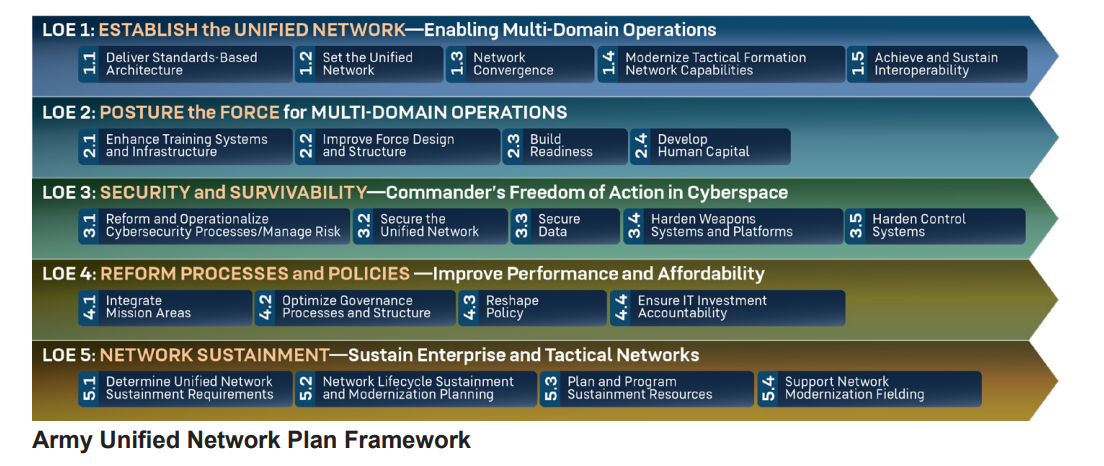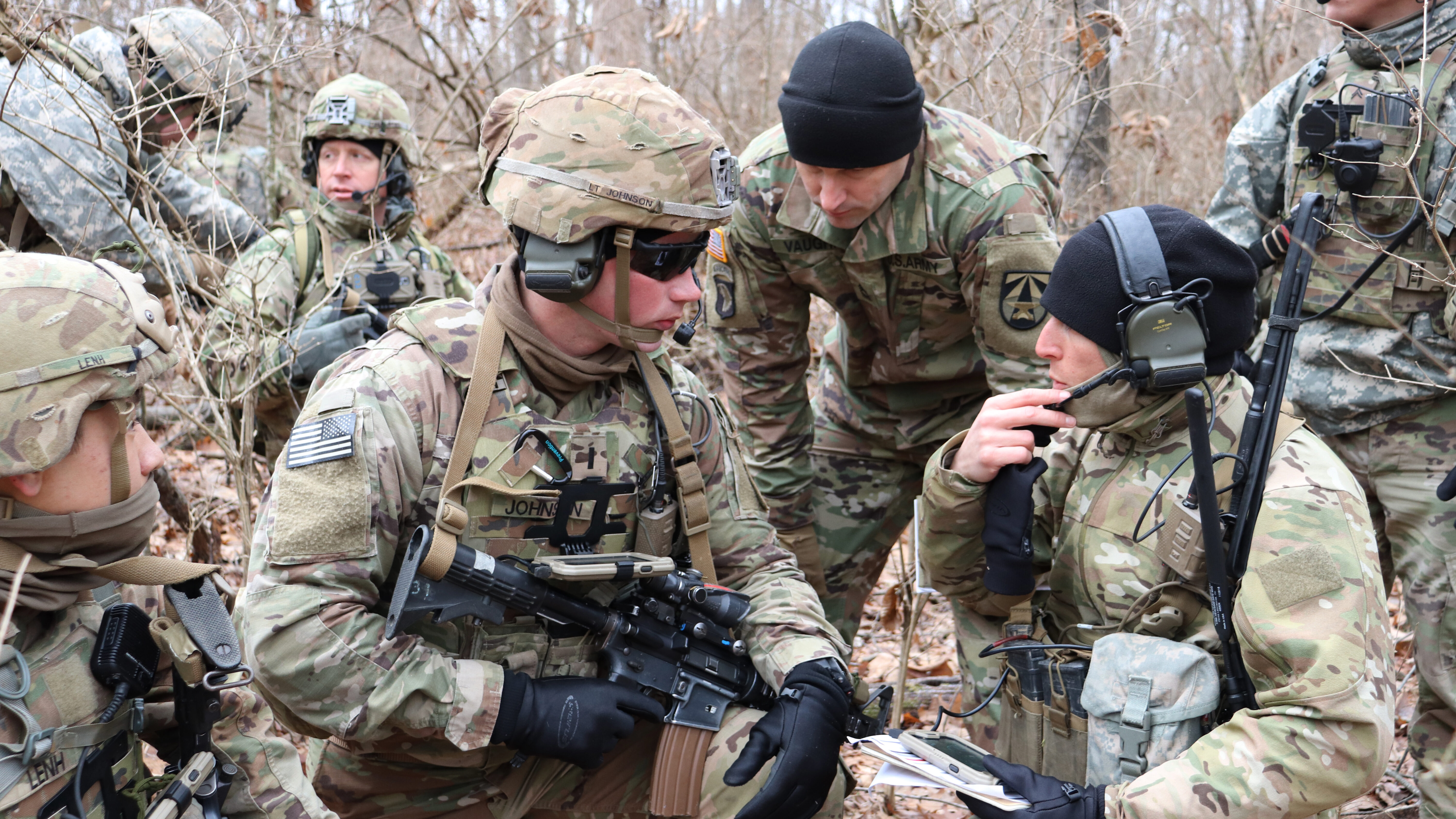To transform itself as a multidomain force, the US Army is stressing a “Unified Network Plan.”
As per this plan, and if everything goes well, American soldiers will have global connectivity on the unclassified network by the end of the 2023 calendar year and global access to the secret network by the end of summer 2024.
“Right now in the Pacific, you can travel anywhere around that [area of responsibility] and plug into the network. By the end of this calendar year, you’ll be able to do it globally, and you’ll be able to do it securely,” Lt. Gen. John Morrison, deputy chief of staff, G6, said at the TechNet Augusta conference early this month in Georgia.
“Think about it from an operational perspective, a unit told to blowout on some [Emergency Deployment Readiness Exercise] or even a national emergency and getting to the distant end and immediately being able to plug in. We have been talking about that for years”, he added.
Gen. Morrison implied that the network currently deployed in the Pacific area of responsibility would go global and provide new capabilities to support flexible networking and data processing. And that will “transition the Army’s network infrastructure from a siloed, theater-centric model into a more efficient and secure one.”
Now, the US Army’s network is theater-centric. Soldiers have multiple systems, network operations capabilities, logins, and form factors to perform their key functions, displayed on a main command post monitor where they manage and secure the network. But given the global nature of threats today, it has been realized that the needs of the hour are first “the global connectivity on the unclassified network” and then “global access to the secret network,” according to Gen. Morrison.
It is argued that for the US Army to be successful on tomorrow’s battlefields, network modernization is essential to fight and win in all domains- air, land, sea, space, and cyberspace. Therefore, innovations are necessary to achieve technological dominance against the US adversaries. These will enhance efficiencies for the Army and strengthen the overall cybersecurity structure.
The US Army has been working for the last three years on its unified network operations (UNO) plan. This plan envisions “a singular and global network that forces can plug into anywhere as well as in transit to locations” rather than being isolated from the tactical space and remote enterprise locations, “creating seams in data, communication, and connectivity.”
Since the US Army is preparing to work in increasingly complex and distributed battlefield environments, UNO is said to be a key enabler for secure global data exchange and a zero-trust security architecture. The idea is to “enhance and consolidate over 30 existing network operation tools into a simplified, user-friendly capability, enabling signal Soldiers to plan, manage, monitor, configure and secure the Army’s unified network more effectively.”

All this comes under what is said to be enhanced security and data exchange through identity credentialing and access management (ICAM). The UNO’s ICAM software will play a significant role in the Army’s zero-trust security architecture and attribute-based data access and exchange, requiring users to be authenticated, authorized, and continuously validated for security configuration and posture to access applications and data.
Capabilities that will be used to transform ICAM include “Identity Governance and Administration” (IGA), “Privileged Access Management,” and “Multi-Factor Authentication” (MFA). These capabilities ultimately will enable more effective information sharing while managing risks and protecting systems against unauthorized access.
“UNO enables soldiers to sense, control, and visualize the Unified Network, from both a targeted and holistic perspective, to enable real-time assessment of impacts to joint multi-domain operations,” according to Matt Maier, project manager for interoperability and integrated services (PM I2S), at the Program Executive Office Command, Control, Communications-Tactical (PEO C3T), which leads the UNO effort for the Army.
“Reducing the number of network management and monitoring applications and tools results in a simplified user experience, increased situational awareness, and stronger cyber network defense.”
If there is a singular, simple, intuitive user interface where soldiers can conduct end-point management at a single device that reaches out to all their unit’s different network nodes, they can plan, monitor, and defend the network more effectively and efficiently, it is believed. This single interface concept can ensure that soldiers get the best data and network information to the commander.
Besides, from a future point of view, UNO is expected to “further reduce technical complexity at the edge by leveraging artificial intelligence and machine learning technologies to simplify operational tasks while providing tailorable and scalable capabilities at the appropriate echelon.”
Incidentally, in 2021, the US Army outlined its unified network plan ( army-unified-network-plan-
Some of the important features of this plan are:
-
Establish a unified network to enable multidomain operations.
-
Posture the force for multidomain operations.
-
Security and survivability.
-
Reform processes and policies.
-
Network sustainment.
The “mantra” here is that in modern warfare, whether physical or digital, forces must have ready and resilient access to data from anywhere. That means unifying the Army’s tactical and enterprise network and developing seamless global communication, as highlighted by the network plan, 2021.
The plan outlined three phases of modernization beginning in the near term out to 2028 and beyond.
In the near term – between 2021 and 2024 – the goal is to establish a unified network. Work in this sphere also involves a standardized, secure architecture based upon zero trust, inserting emerging technologies such as 5G and software-defined capabilities, and movement toward cloud infrastructures, among other activities.

This phase ends with creating a standardized and integrated security architecture that sets the foundation going forward. From 2025-2027, the midterm focuses on “operationalizing” the unified network and begins with converging the tactical and enterprise network capabilities.
During “Phase III: Far term” (2028 and beyond), the unified network will be “fully postured operationally, technically and organizationally” to include robotic and autonomous operations as well as cyber security and re-silencing capabilities.
Other key aspects of the Army’s Transformation to an MDO-capable Force by 2028 include:
-
In all domains, Army capabilities will sustain, enable, extend, and expand the reach of both defensive and offensive actions.
-
The Army’s “inside forces” will operate inside the adversary’s A2/AD (Anti-Access/Area Denial) zones to provide credible, survivable capabilities that deter or defeat adversary area denial efforts.
-
‘Outside forces’ consist of regional and global expeditionary, surge, and homeland defense formations required to control terrain, consolidate gains, and secure strategic support areas.
-
The Army will conduct strategic, operational, and tactical operations that are essential against a peer enemy that enjoys superiority in numbers and complex A2/AD defensive systems.
The plan said that “the integration of strategic, operational, coalition, and tactical effects and capabilities is foundational to the conduct of Multidomain Operations. Meeting this requirement requires a network that converges cutting-edge technologies and effects to enable the Joint/Coalition Force Commander.”
- Author and veteran journalist Prakash Nanda is Chairman of the Editorial Board – EurAsian Times and has been commenting on politics, foreign policy, and strategic affairs for nearly three decades. A former National Fellow of the Indian Council for Historical Research and recipient of the Seoul Peace Prize Scholarship, he is also a Distinguished Fellow at the Institute of Peace and Conflict Studies.
- CONTACT: prakash.nanda (at) hotmail.com
- Follow EurAsian Times on Google News




